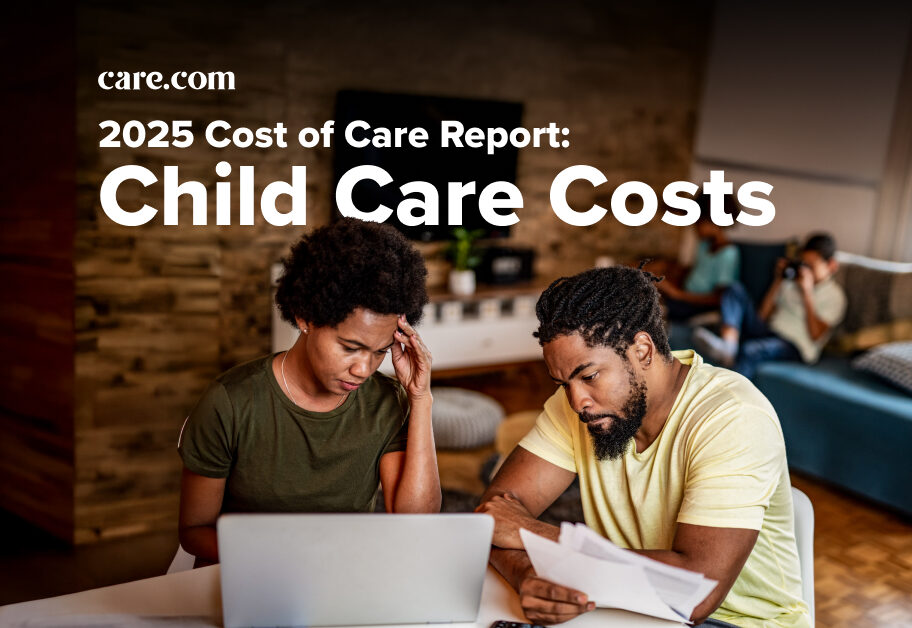In this article
Going back to work after baby may not get the same level of recognition as other postpartum rites of passage, but there is a term for this time period: the fifth trimester. The fourth trimester is known as a physical adjustment period for the birth parent and baby. What follows is the fifth trimester, a phrase coined by Lauren Smith Brody, CEO and founder of The Fifth Trimester, as well as the founder of Chamber of Mothers. This is the period that follows the return to the “real world.”
“The fifth trimester is the return to paid work after the birth of a baby,” notes Smith Brody, who explains that the term grew out of her understanding of the changes babies undergo during what pediatrician Dr. Harvey Karp refers to as the “fourth trimester.”
Smith Brody remembers hearing and reading in Karp’s book “The Happiest Baby on the Block” that the 12 week-mark would be a game-changer. “The time frame sounded familiar, and I couldn’t figure out why,” she says. “Then it dawned on me: That’s exactly when my maternity leave ended. It felt kind of like: ‘At 12 weeks, things will get easier, and you’ll get the baby you always dreamed of… but you’ll be back at work.’”
Needless to say, Smith Brody isn’t the only parent to grapple with this, but there are ways to ease the transition and figure out this new normal. Here, Smith Brody and other experts shed some light.
“It felt kind of like: ‘At 12 weeks, things will get easier, and you’ll get the baby you always dreamed of… but you’ll be back at work.’”
— Lauren Smith Brody, founder of The Fifth Trimester
What is the fifth trimester?
In its most basic form, the fifth trimester marks the end of parental leave and the re-entry into the workforce. However, it’s more nuanced than sitting in a swivel chair you haven’t in a while or brushing up on your customer service skills.
“The fifth trimester is a huge adjustment period overall for both birth and non-birth parents,” explains Deborah Porter, a workplace parent consultant and mom life coach, who notes that, in addition to physically heading back to work, there are also new responsibilities at home and child care issues with which you’ll need to contend. In other words: It’s a new, new normal.
The fifth trimester can also be a “fragile tipping point as women adjust to being on the clock, regardless of whether they are at home or at work,” says Pam Cohen, a behavioral research scientist and chief research and analytics officer at Werklabs, the research arm of The Mom Project.
“For example, first time mothers who were used to being able to stay late or at least be flexible on time when a meeting was running long, may find that they need to leave the office or end zoom meetings right at the end of the regular workday in order to be on time for day care pickups,” she explains. “The reaction – support or lack of support – new parents receive from management when they are working to adjust to newly demanding schedules can make or break their loyalty to their jobs and organizations.”
Going back to work after baby: What to expect
First and foremost, Smith Brody notes, expect to feel a bit shell shocked when you go back to work, no matter your situation.
“I had 1,000 privileges in my favor when it came to going back to work,” she says. “I had a partner that believed in my career, parents who were retired and could help out — yet on my first day back, I felt like a 14-year-old working at a concession stand and no clue how to work the popcorn machine.”
This, in part, is due to the massive life change parents undergo during their leave, as well as the fact that, inevitably, things look different at work (from a company standpoint) when you return, says Smith Brody.
“Things are restructured all the time, so it’s smart to assume some things will be different when you go back,” she says. “And at the same time, you’re going to be seeing things at work through a new lens since, most likely, you’ve had a big reset of values after having a child.”
For dads, who often have or take a shorter parental leave than moms, “returning to work can feel like a gauntlet,” says Cohen, “because managers and colleagues alike (particularly those who are not parents) can often treat them like they are returning from a sabbatical or long vacation and therefore expect that new fathers will be returning feel rested and ready-to-go.”
Additionally, there are a number of emotional and physical challenges moms in particular face while they adapt to being back in the workforce and away from their baby. Among these, Porter notes are:
- Discomfort from breastfeeding.
- Lack of sleep.
- Guilt.
- Stress.
- Anxiety.
The most important thing to remember before going back to work, Porter says, is that things will not “automatically snap back into place” at your job or at home.
How do I prepare for the fifth trimester?
While the fifth trimester is something you have to experience before truly understanding what your new needs are and how to meet them, there are ways to prepare for going back to work after baby.
1. Sort out child care (and then some)
One of the biggest issues working parents face is child care, so don’t wait for the last minute. “Child care arrangements often become complex and aren’t always easy to figure out,” Porter says. “Many new parents don’t live near relatives who can help out, so research is in order — and this is where the non-birth parent can really step up and help out in finding arrangements.”
Many soon-to-be parents sign up for day cares when they’re still expecting, and according to Smith Brody, even that’s not enough. “You’re going to need back up care and back up care to back up care,” she says, adding that for many, child care is “less binary” than it used to be.
“Between the increased cost of child care, the majority of people who live in child care deserts and people who are working from home, the decision to use one child care center only is less common,” she says. “Many families use a combination of options, and each one of those needs backup. What if grandma watches the baby on Fridays and that’s the only day she can get her mammogram?”
Smith Brody suggests having a sit-down each Sunday night, where both parents look at the calendar for the upcoming week together and decide who’s picking up the slack when. “Not only does this help things run smoother,” she says. “It can make you feel like a team.”
“If your budget permits, consider using a meal preparation service, a dog walker or a house cleaning service.”
— Joyce Marter, licensed psychotherapist
2. Find ways to save (and get) time
“If your budget permits, consider using a meal preparation service, a dog walker or a house cleaning service,” says Joyce Marter, a licensed psychotherapist and author of “The Financial Mindset Fix: A Mental Fitness Program for an Abundant Life.”
To that point, Marter also suggests taking time each week to map out your routine, allowing yourself time for self-care. “Give yourself time buffers during the transitions between work and home (even if you work from home),” she says. “If you will be pumping, think through how and when you will do that.”
3. Share in the workload
Before going back to work, partnered parents should come up with a divide-and-conquer plan, so there’s not an imbalance, where one parent is doing more, Porter says.
“Parents should figure out how to share in the workload at home,” she says. “There shouldn’t be a complete imbalance when it comes to chores, responsibilities and everything that goes into running a household.”
For instance, figure out who’s going to empty the dishwasher each morning and who’s going to wash the breast pump parts, so there aren’t any surprises, which, let’s face it, will likely lead to an argument.
4. Make a “gentle re-entry”
“Check your ego, and treat it as if you’re starting a new job,” Smith Brody notes, who recommends “gently re-entering” the workforce. “Go in a do meet and greets and see what’s happened while you were gone. There likely will be projects people started that they should see through to the finish line. However, this can be framed as an opportunity to grow.”
Put another way: It’s a chance to take stock of your duties and potentially reset them.
“Were there things you were doing before you left that were at the bottom of your paygrade?” she says, adding that it’s also a great time to figure out how you measure success now.
“Success after a baby may not equate dollars or rank to you anymore, and if that’s the case, you may also evaluate your personal strengths and how to work them. For instance, before maybe you prided yourself on the fact that you were always the person to turn the lights off at the end of the day. But now, perhaps it’s more about soft skills, such as time management or making the best introductions, which add real value.”
Another reason to ramp back into work slowly and thoughtfully? “Diving in headfirst can lead to burnout,” notes Cohen.
Also, keep in mind, the fifth trimester is ever-evolving. So long as you’re a working parent, and your children or family grows, you’ll continue to reset your values, Smith Brody says. “It’s not finite. You’re always evolving.”
5. Plan ahead (practically)
“If you are returning to an office, pack a bag of items you may need, including breast pads if you are breastfeeding, an extra blouse if you experience leaking, a water bottle to stay hydrated, a way to listen to relaxing music while pumping and healthy snacks to keep your energy up,” Marter says.
“Also, put a little thought into your work wardrobe beforehand, if you have to go in,” she adds. “Maternity clothes or not, make sure you have a few outfits that are comfortable and that you feel good in to keep your self-esteem positive.”
“Honor your emotions. It is completely normal to have feelings of loss and concern as you transition back to work.”
— Joyce Marter
6. Prace self-compassion
“Honor your emotions,” Marter says. “It is completely normal to have feelings of loss and concern as you transition back to work. Many working moms suffer from guilt that they are leaving their baby in the care of others. Some feel relief to be returning to structure, a support network at work and baby-free time. Whatever your feelings are, allow yourself to experience them without self-judgment.”
“They are neither right nor wrong, good or bad, they just are,” she continues. “You might want to build in a 15 minute transition time in the morning for a journaling or meditation practice or even to have a good cry. The wave of emotions will level out over time.”
Red flags to look out for
Any new parent can benefit from being preemptive and proactive when it comes to therapy preventatively and proactively, says Marter. “Therapy is a way to receive emotional support and practical tools for managing the changes in identity, daily routine and division of labor at home,” she notes.
That said, the following are definite signs you should speak with someone:
- Low mood or mood swings.
- Feelings of panic or overwhelm, ruminating thoughts.
- Low self-esteem, feelings of worthlessness.
- Negative, fear-based or catastrophic thinking.
- Obsessive or compulsive behaviors, intrusive thoughts.
- Insomnia or serious sleep deprivation beyond what is expected with a newborn.
- Changes in appetite and weight that are outside the scope of changes that are expected after childbirth.
- Emotional dysregulation, uncontrollable crying.
- Difficulty concentrating, thinking clearly or making decisions.
- Substance misuse.
- Significant relationship conflict at home and/or work.
- Loneliness.
- Hallucinations.
- Hopelessness, despair.
- Not feeling attached to the baby.
- Thoughts of harming self or others.
Resources for the fifth trimester
“I can’t overstate the importance of having a support system during this time,” Porter says. “You need people that not only support you, but people who are going through this phase, too, or who have gone through it in the past — whether it’s people in your neighborhood or online. It will help you not feel alone.”
Additional resources include:
Employee Assistance Programs (EAP)
“This is a benefit offered through your or your partner’s employer,” Marter says. “EAPs offer free and confidential short-term counseling as well as other resources like referrals for child-care and financial planning.”
Flexible return-to-work periods
“Some organizations allow for partial hours or a lighter workload for a certain period of time post-leave,” Cohen explains, adding that other companies may offer a specific plan for how employees return, with “clearly delineated responsibilities, hours expectations and communication around flexibility needs.”
Working parents employee resource groups (ERGs)
“ERGs [which are generally grassroots] and even parent coaching are becoming more commonplace,” says Porter, as “supporting working parents is a benefit to the parent and the business.”
Smith Brody also notes the following as helpful resources for working parents:
- A Better Balance.
- Chamber of Mothers.
- The Mama Attorney.
- Postpartum Support International (which provides a vetted list of mental health providers).
“When organizations seek to understand parent needs and act in ways that actively demonstrate that understanding, parents will be happier, more loyal and more productive.”
— Pam Cohen, chief research and analytics officer
Remember, you’re not alone
While there are a number of variables at play when you’re going back to work after baby, having a supportive workplace is key. “Overall, a culture of support for parents is extremely important,” Cohen says. “When managers check in with returning parents about their needs, are flexible in adjusting to those needs and don’t treat them as a burden but instead as an asset, it makes a big difference.”
“When organizations seek to understand parent needs and act in ways that actively demonstrate that understanding, parents will be happier, more loyal and more productive.”
Also important to remember: This is systemic. This doesn’t doesn’t have to be an individual problem,” Smith Brody says. “We can use the term to coalesce and work for change.”
“Before you clean out your closet, you throw everything onto your bed before filling the closet back up neatly,” Smith Brody analogizes. “You need the mess before the thing can make sense. We may still be in that mess, but we can’t solve a problem we can’t see.”





